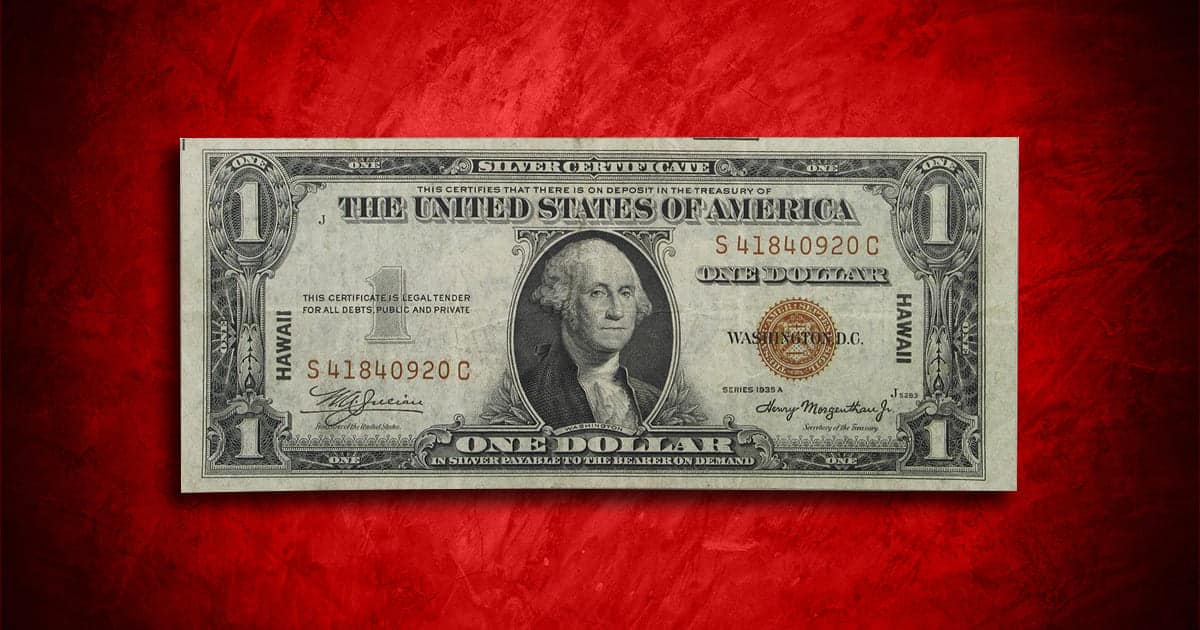
Everyone who knows US history recalls President Franklin Roosevelt’s immortal words, “Yesterday, December 7th, 1941—a date which will live in infamy—the United States of America was suddenly and deliberately attacked by naval and air forces of the Empire of Japan.”
This surprise attack on Pearl Harbor in Hawaii shook America’s resolve. The two oceans on either side of us didn’t protect us this time. We needed to react appropriately, and we certainly did. After the obligatory declaration of war, we made plans to defend our territory in Hawaii.

The American government and the military believed that a Japanese invasion of Hawaii was not only possible but also likely. Japan had been invading islands around the Pacific and in the Pacific Rim.

After much debate, the Military Governor of Hawaii, Delos C. Emmons, issued the order to recall all US currency. The government reprinted US currency to make it very easy to identify. The military truly believed that Japan would overrun Hawaii and use these islands as a staging ground for an invasion of the West Coast.


The typical Silver Certificate has serial numbers and a Treasury Seal printed in dark blue ink. However, to make these new Hawaii notes easy to identify, the serial numbers and Treasury Seal were printed in brown ink, and the word “HAWAII” was boldly printed on each side of the bill.
The word “HAWAII” is overprinted on the back of the bill. These changes were made to make the notes easy and fast to identify. If the Japanese attacked Hawaii, all these overprinted notes would be deemed worthless, so the Japanese could not financially benefit from overrunning Hawaii.
Not only were $1 bills over-printed, but $5’s, $10’s and $20’s were included as well. All non-over-printed notes were deemed worthless once the recall period ended. So, you had to turn in your notes to get the new over-printed notes. Over 65 million notes were over-printed.
By August 15th, no non-overprinted notes were left in Hawaii. But as the war raged on, instead of the Japanese making further advances toward Hawaii, the Americans made further advances through the Pacific islands toward Japan. By the beginning of September, the Japanese had surrendered, and the war was over.
Now, the US government recalled these over-printed notes and replaced them with regularly issued US currency, but on the islands, the military was faced with more than $200 million worth of over-printed notes to be dealt with. They decided to destroy the notes in Hawaii rather than risk shipping so many notes back to the mainland. At first, the islands’ only crematorium was used to burn the notes, and screens had been placed on the smokestack to catch any unburnt scraps of currency. However, the furnace used in the crematorium could not handle such a large amount of paper. So, with its commercial furnaces, the Aiea Sugar Mill was pressed into service.

Servicemen and Hawaiian Island residents saved the surviving notes as war souvenirs, and they account for the specimens that we have today. The government had money to burn, and within 3 months, all the recalled notes had been destroyed.




